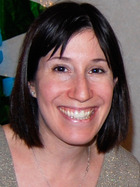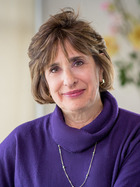- Q.
I was diagnosed with CLL in 2003 and have no symptoms. My white cell count is about 120 and my platelets are at 290. My oncologist wants me to take Rituxan to get the counts down. I do not have an enlarged spleen and have not gotten sick. I have been told by my primary doctor that you should treat the symptoms not the counts. How do I get my oncologist to understand this?
A.CLL or, chronic lymphocytic leukemia is the most common adult leukemia. The average age of diagnosis is 65 to 67 years of age, although it is diagnosed in younger adults as well. It is one of four main types of leukemias. Because it is a chronic disease people can go years without treatment, so it is important to monitor the disease for any changes.
It appears you are struggling with different medical opinions. Your doctor suggests focusing on symptoms while your oncologist believes that the elevated counts indicate it is time for treatment. This is a common struggle for patients – what to do when you receive differing medical opinions? There is often uncertainty in which is the best option, and ultimately the decision rests with the patient.
Doctors can suggest, strongly sometimes, treatment options that patients do not feel comfortable with. When that happens it is helpful to open up a dialogue with your doctor where you can explore the rationale behind his/her thinking and you can express your concerns. An open and honest relationship with your health care team (often referred to as a partnership) is important. For many patients this additional knowledge helps them make an informed decision. For oncologists and other members of the health care team, it lets them know about what is important to the patient and how they want to approach his/her disease.
Here are a few additional resources addressing CLL treatment and patient/doctor communication:
- The National Cancer Institute’s Chronic Lymphocytic Leukemia (CLL) Treatment Summary
- CancerCare’s publications, “Doctor, Can We Talk?” Tips for Communicating With Your Health Care Team and Your Health Care Team: Your Doctor is Only the Beginning
- Q.
I'm worried my husband has some ongoing side effects from his treatment for acute lymphoblastic leukemia (ALL). Do you know if there are specialists who treat side effects from treatments?
A.Blood cancers are called hematopoietic cancers and treated by hematologists (doctors who specialize in blood disorders). Blood cancers consist of three types: leukemia, disease of the blood; lymphoma, disease of the lymphatic system; and multiple myeloma, disease of the bone marrow. There are numerous subtypes of all three blood cancers, especially among lymphomas and leukemias. The diagnosis is very important because it will directly impact the treatment options, and different treatments may result in different side effects.
ALL is a cancer of the white blood cells, the cells in the body that normally fight infection. Most cases of leukemia are associated with changes in genes and chromosomes in the cancerous white cells, which is the case for ALL.
Because many standard cancer treatments are very powerful, they also carry a risk of side effects; loss of hair, fatigue and nausea are the most common. Most side effects go away after treatment. However, some treatments can have ongoing and on occasion permanent side effects, which can include neuropathy, “chemobrain” and anemia, among others.
The professionals who make up his treatment team are the best people to address his side effects. His doctor might adjust treatment when side effects are dangerous or harmful. If side effects continue post-treatment, again his treatment team is the best source for help. Your husband may be prescribed medications to help manage side effects, or referred to a specialist who can monitor and treat side effects. Specialists include physical therapists, neurologists, psychiatrists, nutritionists or other specialized health care professionals.
Please take a look at our Connect Education Workshop podcasts that address the side effects of treatment. In addition, CancerCare also offers a number of publications that might be helpful in managing side effects.
Additional resources addressing ALL treatment and side effects include: - Leukemia and Lymphoma Society - National Cancer Institute’s Adult ALL Treatment Summary
- Q.
My 6-year-old son is getting treatment for leukemia. He is getting so much attention right now that his older brother is feeling left out. What can I do?
A.When a child is diagnosed with cancer, it’s a frightening time for the whole family. Unfortunately, it’s not uncommon for siblings to feel like their needs are being neglected. They may feel jealous, angry, frightened, or have other strong emotions.
Here are some tips for helping siblings manage:
- Make time to talk to individual siblings. Ask them how they are doing, and take time to really listen to them.
- Invite siblings to join you in fun activities. Siblings need to laugh, have fun, and be themselves, especially during this difficult time.
- Send emails or cards to siblings to let them know you are thinking of them.
- Encourage siblings to choose a special support person. Then, help them connect with that person. Keep in mind that they may want you to be that person.
The key is not to expect that siblings will just “get over” these feelings with time. In order to maintain their strength, courage and hope, they need your love and support more than ever.
These books may be a useful when helping children who have a sibling with cancer:
- Life Isn’t Always A Day At The Beach, by Pam Ganz
- What is Cancer, Anyway? Explaining Cancer to Children of All Ages, by Karen Carney
- Chemo Crusader and the Cancer Fighting Crew, by Melodie Homer
You can also visit SuperSibs!, an organization providing support to siblings of children with cancer.
- Q.
About six months ago, my five-year-old daughter was diagnosed with leukemia and I had to leave work to take care of her. Now, I'm struggling financially and need help paying the bills. Where can I get help?
A.Children with cancer typically undergo an intense treatment schedule and their care can become a full-time job in itself for the parent or guardian. Unexpected expenses can range from uncovered treatment costs to transportation and childcare, as well as those of daily living, which also especially difficult to meet when there is a loss of income.
CancerCare, The Leukemia and Lymphoma Society, and the National Children’s Cancer Society, offer limited financial assistance for some treatment and treatment-related expenses for eligible families. The American Childhood Cancers Organization also provides a listing of possible resources.
Ask the social worker at your child’s treatment center for information on organizations in your community that assist children with serious illnesses. In addition, many large treatment centers have special funds for children to help defray the cost of treatment and related costs. Make sure you inquire about whether your treatment center has such a fund, and how you might qualify.
Finding help with the expenses of daily living is more challenging. A possible resource includes the 211 referral line of your local United Way which provides links to community programs that may offer financial assistance or practical help. You can also try negotiating payment plans for your monthly bills with your utility company, phone provider and other creditors, who may also offer assistance programs to people in need.
For additional guidance, please read our fact sheet, Sources of Financial Assistance.
- Q.
One of my best friends has had a bone marrow transplant for leukemia and will hopefully be getting out of the hospital soon. I'm looking for a website where people can sign up to sit with her over the next few months and take her to doctor appointments. Do you have any suggestions?
A.The transition home after a bone marrow transplant can be a time of great readjustment. There may be many outpatient medical visits and it will likely take time for the patient to return to normal levels of activity. It can be helpful during this time to organize a support team to assist with the many practical aspects of returning home. However, friends and family may not be aware of the needs of a loved one recovering from a transplant or know how best to help. Luckily there are resources that can help loved ones organize help and support for an individual recovering from a bone marrow transplant, or any cancer treatment.
My Cancer Circle™ is a free online private support community for caregivers of people facing cancer. At mycancercircle.net you can easily create a community and coordinate volunteer activities that will meet your friend’s needs as she recovers from her bone marrow transplant, such as preparing meals or arranging transportation to medical appointments. By creating a support community you can inform friends of what tasks need to be done and friends can sign up for the activities they can best assist with. My Cancer Circle is also a great way to quickly and easily keep your online support community informed of recovery updates, milestones reached, photos, or other information.
You can also find additional information about recovering from a bone marrow transplant through The National Marrow Donor Program and The Bone Marrow Foundation.

 Answered by
Answered by  Answered by
Answered by  Answered by
Answered by  Answered by
Answered by